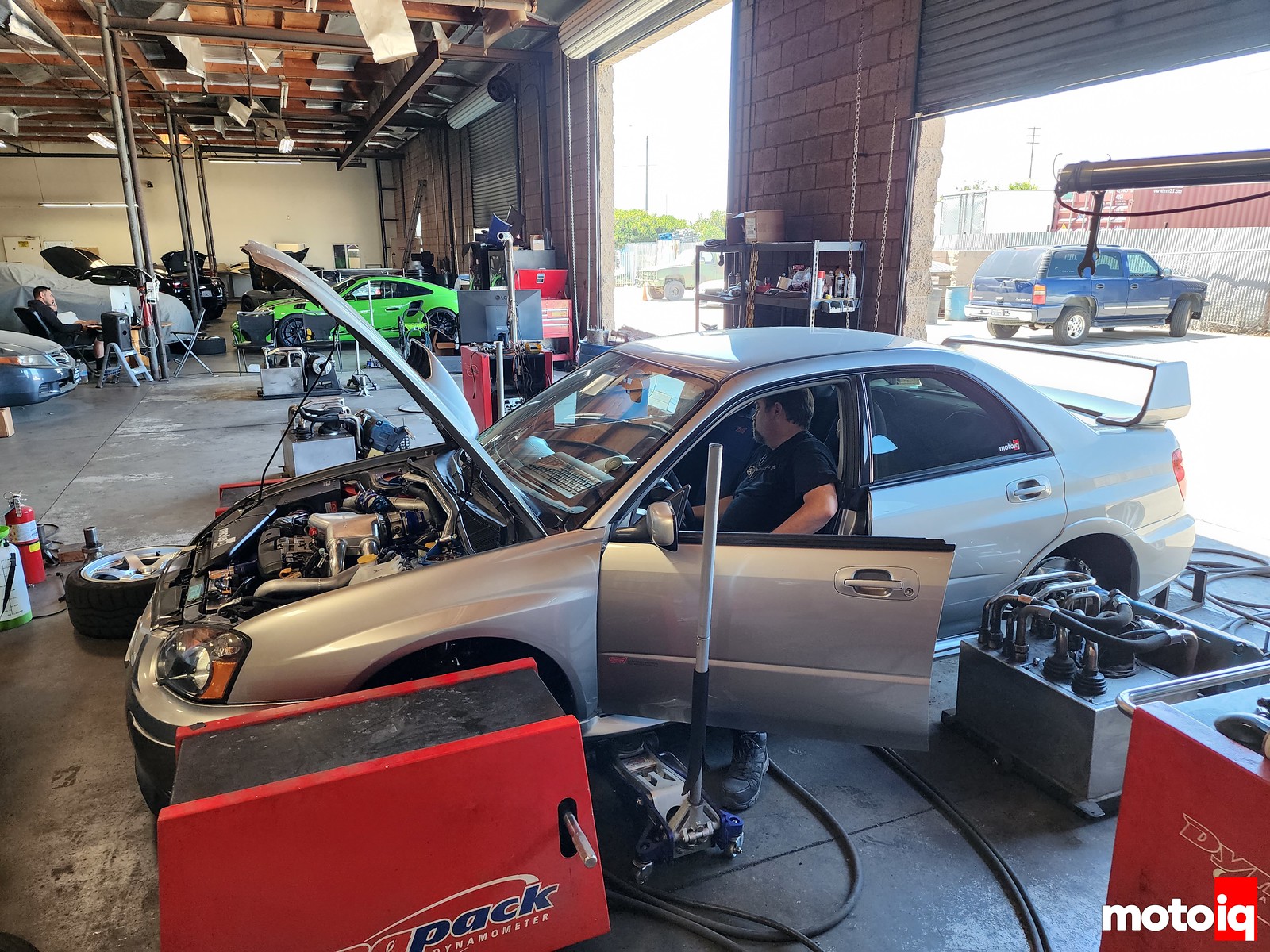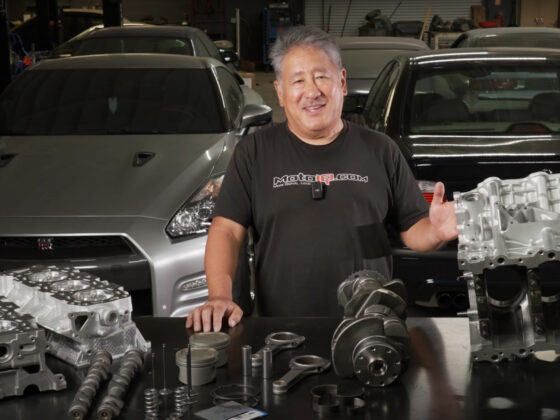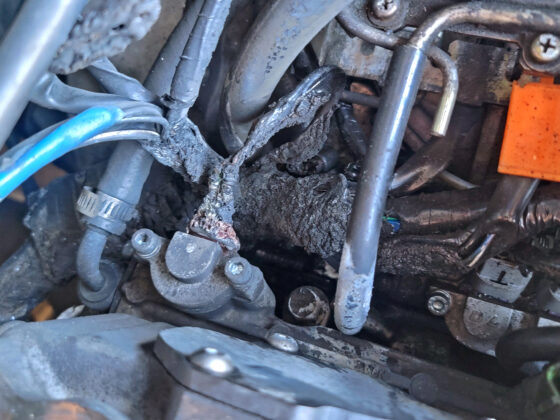
Shawn tweaked our injectors invalid time and he was able to get a decent idle with huge injectors although the AFR was slightly rich. Shawn had warned us that this is typical with big injectors. Our cold start and cold driveability were flawless which is pretty difficult with ethanol although we will see how this holds when the weather gets cold.

Now it was time to dump in some e85 and see how much power we could make. We added some pump e85 and got our ethanol content up to 70% which isn’t ideal to create our high-power maps but at least our tune will be on the conservative side.

Here is our previous power curve. As shown in the red trace, you can see our power’s early peak and then how it dropped like a rock.

Our new turbo made 517 whp and 507 lb-ft of torque. This is a significant gain over our old turbo. We also did it with less boost. We spiked the boost at 25psi but we tapered it off at 18 psi at higher rpm which is 2 psi less at higher rpm than previously. This is a testament to how efficient our IAG engine is. Best of all our engine made good power from 4000-7600 rpm. At 4000 rpm it exceeded the stock power output and by 4500 it was making more than 450 whp. This is a nice wide powerband with a lot of area under the power curve, vastly better than before. The peak intake air temperature dropped from 145 degrees to 125 degrees, a sign of improved compressor efficiency. This was even despite the 100-degree-plus day. Our 517 hp was pretty repeatable pull after pull even with the extremely high temperatures. We also had zero knock count. We think on a more normal day temperature wise we would be seeing at least another 10 hp.
Going full tilt our injector duty cycle was 80% which was way better than our previous duty cycle of 96%. This means we have headroom to run E98 race ethanol later at some time if we choose to.
Shawn also tweaked our rev limiter to make it much smoother. Starting at 7700 the drive-by-wire throttle starts closing and at 7900 the injectors start cutting sequentially to a hard cut at 8000 rpm. This is a very smooth rev limit that is easy on the engine and drivetrain and very easy for the driver to feel and get the hint to shift before the hard cut.
Curiously the engine didn’t respond to turning up the boost higher than we had it previously. We think it is because we have reached the flow limitations of the Greddy front-mount intercooler and the smallish charge air tube from the compressor discharge to the intercooler. We had wanted to keep this tube small to control the typical Subaru turbo lag. We also think that the Cobb CARB-approved intake filter element is also too small for big power numbers like this.




9 comments
Really enjoyed the read, very impressive results even on such a hot day, really liked your thought process on why not going for a bigger turbo for heat management reasons, very overlooked aspect on builds, one must use factory engineering for fundammentals like that, it´s very hard to modify that in a street car, thinking of stuff like that keeps you save from trouble
I would really love to see this car in person (not when I’m busy at Subiefest) and shoot the breeze with you. Maybe a ride-along on a freeway on-ramp?
The car is my daughter’s so it is not typically where I am
Excellent work on this. Any chance we can get some driving footage of the car showing boost threshold and response? *Asking for a friend.
Go to my daughter’s Instagram kurisuta.k I think she had a video of on-boost acceleration.
I’ll check it out. Also appreciate the video that dropped today. Thanks!
Thank you!
I’m slightly confused. Is this the second or third aftermarket turbo in the car? I’ve read the series multiple times and it almost reads as if the turbo was upgraded at the same time as the built engine went in, and then again (3rd precision turbo) for these numbers.
It is the second turbo, the first was the 55mm inducer one.